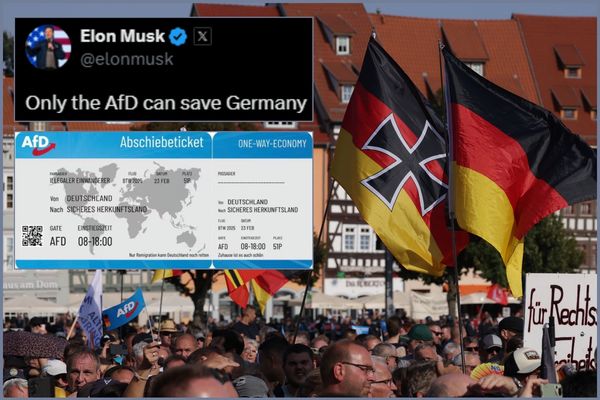
KABUL—Mohammad Yaser Qubadian was two years old and playing with toys when his father was killed by a Taliban roadside bomb in 2004. As a child, Qubadian used to wake up in the middle of the night, visit his father’s grave, read the Quran, and weep until morning. Fourteen years later, the family gravesite grew. One evening in August, 2018, an Islamic State suicide bomber walked into a local educational center. Qubadian picked up the dead body of his sister from the ashes and went home covered in blood.
“I was too young for such tragedies. The war has taken away everything from me,” said Qubadian, now the vice president of War Victims Centered-Peace Community, a national group for civilian victims of the war. “I have no reason to live, expect demanding justice.”
As Qubadian seeks justice for his father and his sister, thousands of miles away in Doha, Qatar, the children of the same Afghan leaders who started the war are now seeking to end it. (Anas Haqqani, one Taliban negotiator, is the son of Jalaluddin Haqqani, who was one of the initial leaders in the war against the Soviets. Batur Dostum, one government negotiator, is the son of Marshal Dostum, a recently promoted warlord who fought for the Soviets and then turned against the communists in Kabul.)
The Doha negotiations between the Taliban and the Afghan government will have to go beyond deal-making and include the civilian victims as a third and independent party at the negotiation table, Qubadian insists. There will not be justice or healing in the country without a fact-finding commission that investigates, acknowledges, and apologizes for the suffering of civilians.
Over the course of the 19-year war, The Taliban, the Afghan government, the U.S. military, and allied forces have killed countless civilians in urban and rural areas. The Taliban often conducted suicide bombings and set off car bombs in cities, disproportionately killing civilians as government officials sheltered safely behind the blast walls. Crossfire and improvised explosive devices are also blamed for high civilian casualties.
An estimated 157,000 people—including 43,000 civilians—were killed in Afghanistan between 2001 and 2019. And as many as two million Afghan civilians were killed in the 1970s, 1980s, and 1990s, according to Afghanistan Center for Memory and Dialogue. The victims suffered from a double catastrophe: first losing their lives and then fading from the country’s collective memory.
The pattern of impunity and rewarding violence has been a constant in recent Afghan history, in particular the communist era. After Afghan communists gained power in April 1978, killing civilians en masse and throwing the country into chaos, the Soviet Union invaded to support the regime that faced nationwide resistance. In the nine-year war, the Soviet troops and their Afghan allies deliberately targeted civilian sympathizers of the mujahedeen, some of whom violated humanitarian laws by executing regime forces and rival groups, according to a U.N. report released in 1990.
The Soviets withdrew in April 1988, leaving the civilian killings and atrocities uninvestigated. In the power vacuum created by the Soviets’ exit in 1998 and by the collapse of President Mohammad Najibullah’s government in 1992, Afghan mujahedeen factions turned their guns against each other in Kabul, relying on a strategy of targeting civilians as they vied for power.
Instead of investigating such killings, the leaders of the factions amassed wealth and shared power following the fall of the Taliban regime in 2001. The warlords gained so much power that they were able to block transitional justice efforts over the years, approved a national law to forgive themselves in 2007, and halted the release of a report on their killings by Afghanistan Independent Human Rights Commission in 2012.
The power-sharing politicized justice as well as ethnicity. The warlords portrayed themselves as saviors of certain ethnic groups and the government gave them power in exchange for their support, even though the warlords supported only their patronage networks, pushing ordinary people out. The resentment over past atrocities lived on among the Afghan people as the warlords refused to acknowledge and apologize for civilian killings.
Inclusion of the civilian victims in the negotiations would break the old pattern of short-lived deals and rewarding violence. The chronic war in Afghanistan has destroyed countless lives across three generations. In each episode of the conflict, the armed rivals killed civilians, made deals, forgave themselves, and then turned against each other later on. The cycle has dragged on for more than 40 years.
For a sustainable peace rather than a short-lived deal between the Afghan government and the Taliban, inclusion of the civilian victims of the war in the process plays a crucial role. Activists say that the victims in particular help the peace process to move forward through offering testimony about their suffering. The trouble is that neither side is willing to consider victims as a serious part of the negotiations. If the Taliban, the Afghan government, and warlords admit to their killings of civilians, the victims’ families are likely to forgive them. But to make that happen, there must be some formal body to hear and acknowledge their testimony.
“A political settlement between the Afghan government and the Taliban is just the first phase of the peace process,” said Mohammad Hussain Saramad, the head of research and advocacy at the Afghanistan Commission of Human Rights and Democracy, an NGO. The process lays out social foundation for peace by taking the transitional justice, which includes independent investigations into civilian killings by the parties, acknowledging the victims, seeking amnesty, and possibly paying compensation, said Saramad.
With the slow-motion peace process, the parties to the conflict are yet to show sincere interest in inclusion of the civilian victims in the process. One member of the government negotiating team in peace talks said that there was a loose topic for the victims in government’s agenda for talks with the Taliban. The Taliban did not return requests for comment. Discussing victims hurts both parties’ legitimacy, as they see civilian victims as collateral damage of their holy war and fear losing allies.
At the heart of the demand for justice is recognition of victims rather than criminal investigations into the atrocities to put perpetrators behind bars. A Joint Special Victims’ Committee could be the part of the deal between the Afghan government and the Taliban in a bid to address immediate needs of the war victims’ families—like food, given that many victims were breadwinners. Such a committee would also rebuild the country’s justice system and shatter the culture of impunity in society.
“The legacy of the 40-year war in Afghanistan is not solely destruction of buildings and cities, killing of millions of people, and displacement of millions of others,” said Saramad. “What we are dealing with right now is the destruction of structure of the society. The destruction is fueling violence in the country.”
Fakhria Bayat, who lost her brother in the civil war, said that the public did not understand the human toll of the war, yet. “Me and my family and other families who lost their family members understand the cost of the war,” said Bayat. “The country is becoming a big graveyard packed with wounded and disabled people, drug addicts, murderers, and thieves.”
Masih Ur-Rahman Mubarez, 40, who lost his entire family in a U.S. airstrike in September 2018, has been fighting for justice for his family two years. In Sep. 2018, Mubarez was in his rented room in Iran when he received a phone call from his family. Amina, his wife, told him that there had been a night raid, and soldiers who spoke English, Farsi, and Pashto searched the house, saying they were there to rescue four to six Afghan Special forces from a Taliban prison 400 meters away.
Later in the day, when these soldiers were about to leave the area, the Taliban opened fire on them. The joint-force called for an airstrike, which wiped out all twelve members of the Mubarez family, including his wife, four sons, and three daughters, along with four other young children who were in his house on that day. Initially, the U.S. forces denied any airstrikes, then they admitted the airstrike but denied civilian casualties, said Mubarez.
“I want justice for defenseless people, particularly for my own family,” said Mubarez, who has not rebuilt his house ruined by the airstrike. “There is a strong feeling inside me that I need to stand up for justice and for those who are unable to stand for justice.”
Mubarez is part of large victim community that is a product of decades of war. As this community grows and mobilizes, it becomes the primary hope for justice in a country where politics tends to represent the interests of a tiny class of stakeholders. Politicians are reluctant to pursue such efforts because they often gain power through force, but victims have the potential to break Afghanistan’s long cycle of violence.







